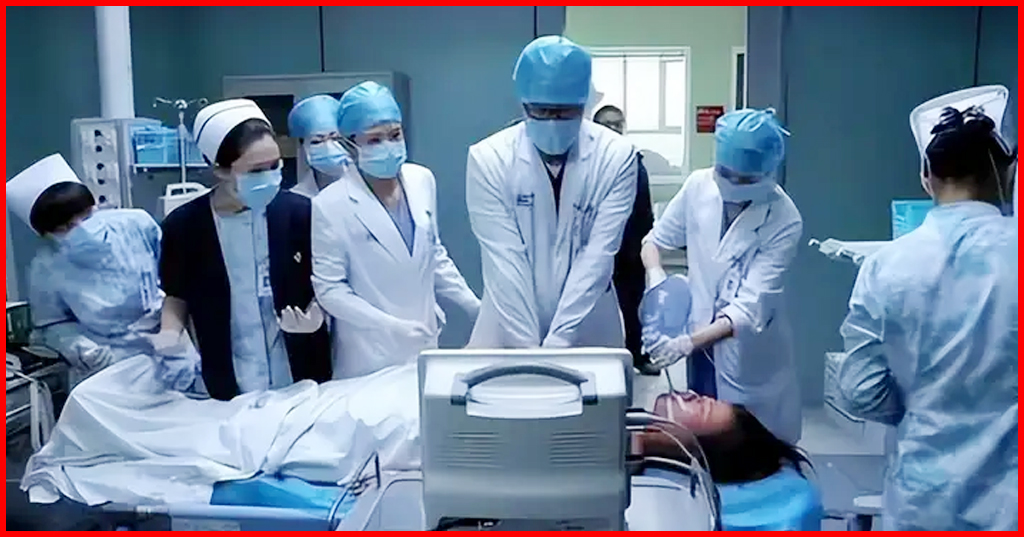
Low blood pressure, fast heartbeat,+ chest tightness and shortness of breath, be careful of pulmonary vascular blockage
A female, 35 years old, suddenly felt a rapid heartbeat, chest tightness and shortness of breath, and felt very uncomfortable. She went to the clinic and measured her blood pressure, which was very low, only 70/50 mmHg, and her heart rate was very fast, 130 beats/minute.
The clinic did not dare to neglect the patient and immediately sent him to a big hospital.
When I went to the hospital to measure my blood pressure, it was indeed very low and my heart rate was indeed very fast. I was given intravenous drip and dopamine while I was undergoing relevant tests.
I first did an electrocardiogram, which showed: S1Q3T3, a typical electrocardiogram of pulmonary embolism .
That’s right: there is blood clot in the pulmonary blood vessels. Most of us know that the heart blood vessels will be block and the heart will stop. Which is call myocardial infarction. There is blood clot in the cerebral blood vessels. Which can cause stroke, hemiplegia and aphasia, which is call cerebral infarction. The blood vessels in the lungs can also be block. Which can also cause sudden death, which is called pulmonary infarction.

Myocardial infarction
Of course, myocardial infarction and cerebral infarction are mainly caused by blood clots formed after the rupture of plaques formed by atherosclerosis.
What is pulmonary embolism? These are the dangers? What symptoms should be suspect of pulmonary embolism? Why did this woman have pulmonary embolism when she was fine? How to prevent it?
Pulmonary embolism, in simple terms, is a blood clot that blocks the pulmonary blood vessels. If the pulmonary blood vessels are block, how can you breathe well? Therefore, you will experience hypoxia, chest tightness, shortness of breath, and other symptoms. You may also experience coughing, hemoptysis, chest pain, and other symptoms. Because of the sudden lack of oxygen, some people may feel nervous, irritable, panic, and a sense of impending death.
If the blood clot is very large and blocks the large blood vessels, breathing may stop immediately, causing sudden death. One of my teachers died suddenly in a parking lot, and later examination showed that he had pulmonary embolism.
If you suddenly experience palpitations, a faster heartbeat than usual, accompanied by chest tightness, shortness of breath, and low blood pressure, then you should highly suspect pulmonary embolism. These are the typical manifestations of pulmonary embolism.

In typical pulmonary embolism, the electrocardiogram will show S1Q3T3, new right bundle branch, etc., which are the basis for diagnosing pulmonary embolism.

Further examinations such as blood oxygen, blood gas analysis, D2 aggregate, lung CT or pulmonary angiography can confirm the diagnosis.
After diagnosis, thrombolytic or anticoagulant therapy is require.
This lady, who never moved and spent most of her time sitting and playing, was a typical sedentary person, which was the cause of her pulmonary embolism.
Blood flow
Long-term inactivity slows down blood flow, and drinking less water makes it easy for blood clots to occur in the lower limbs. If blood clots fall into the lungs, it will be pulmonary embolism. Therefore, we must insist on proper activities. Activities are not only the basis for preventing and controlling the three highs, preventing and controlling cardiovascular and cerebrovascular diseases, but also the basis for preventing blood clots.
Of course, in addition to this type of pulmonary embolism, amniotic fluid from childbirth may also cause amniotic fluid embolism, and patients who are bedridden for a long time or have cancer may also develop blood clots and cause pulmonary embolism. For these high-risk groups for pulmonary embolism, listen to the doctor’s advice and take precautions.
Most of us can live normally. Remember, don’t sit still all the time. Take some time to walk and move around every day. It’s good for you. At the same time, remember to drink water.

Although the blood clots of pulmonary embolism are different from those of myocardial infarction and cerebral infarction, these types of blood clots are all related to lack of exercise. Therefore, it is necessary to insist on proper activities. Don’t sit for a long time, and don’t sit for a long time without exercise!


3 thoughts on “Low blood pressure, fast heartbeat,+ chest tightness and shortness of breath, be careful of pulmonary vascular blockage”